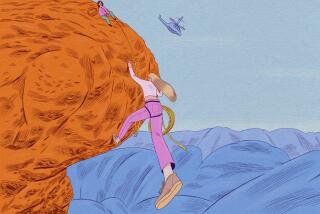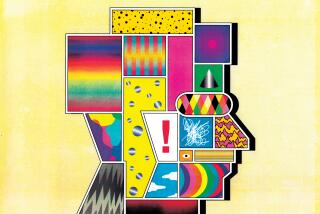My Turn: Don’t panic — meditation can help
My little bit of a nervous breakdown started 10 years ago, when my daughter — then five — was diagnosed with epilepsy. After six weeks of smiling through neurologist appointments, EEGs, blood tests and boatloads of worry, I started having panic attacks, which are aptly named. They feel like total, uncontrollable panic.
Mine started with a tingling in my head and quickly spread to tunnel vision, sweaty palms, thumping heartbeat and the belief that I was about to die. One panic attack invites many, and in the weeks to come I had them in stores, at home, in the day, in the night. They were my body’s way of telling me that something had to change.
So, I started therapy, I started Paxil, I started walking up to six miles a day, and I started very effective breathing exercises where, at the first sign of a panic attack, I would count backwards from 10 taking long, slow breaths with each count.
And slowly, with these strategies, the gift of time and my daughter’s improving health, I got better. I stopped the Paxil. I stopped the therapy. I stopped the breathing exercises. But I kept walking, although less and less as the years went by.
But I hadn’t really changed, so I guess it was inevitable that one day I would fall apart again. As the old saying goes, “You’re only as happy as your most miserable child,” and when my daughter reached puberty, we all got pretty miserable. Many kids with epilepsy take a turn for the worst when they reach the teen years, and that was true with my daughter, which meant even more neurologist visits, even more blood tests, even more worry.
One day I thought I was having a heart attack. I wasn’t. My old friend Mr. Panic was back.
But this time I could draw upon tools, and that helped. More important, I realized that I needed to change. I couldn’t be a constant yo-yo mirroring everyone else’s health. I needed to be strong in myself.
So I did the smartest thing I ever did: I started meditating. I’ve been doing Vipassana meditation for about three years now.
In Vipassana, we focus on the breath. When we realize our minds have wandered, we go back to the breath. In that moment, we “wake up.” We practice mindfulness. And, funny enough, after a while, you start “waking up” in daily life too.
Now, when my mind starts to spin out tragedies or dwell on past dramas, I’m less likely to get stuck in them. I wake up. When the stress of parenting a chronically ill child ratchets up, I take solace in the fact that my hardships are like each breath: They evolve. They pass. Nothing lasts forever.
My situation hasn’t changed. I’m still the mom with the sick kid, and that’s hard. But my response to my circumstances has changed. And that’s made the difference, at least for now, and that’s OK with me.
Margaret Finnegan is a writer and writing instructor at California State University, Los Angeles. Her work has appeared in the Los Angeles Times, Salon and other publications.
My Turn is a forum for readers to recount an experience related to health or fitness. Submissions should be no more than 500 words, are subject to editing and condensation and become the property of The Times. Please email [email protected]. Read more essays at latimes.com/myturn.






